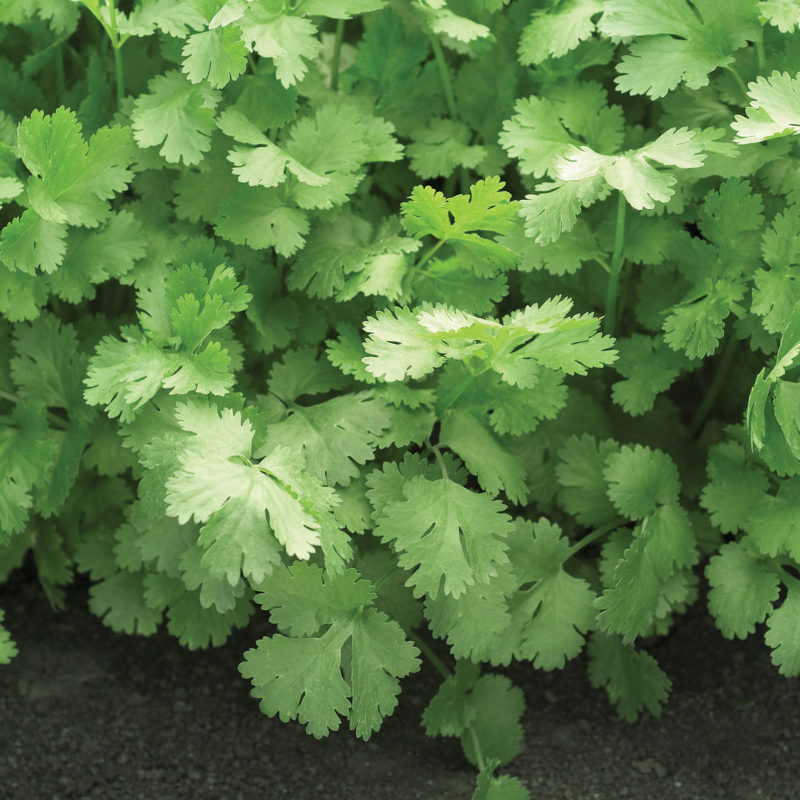Cilantro (a.k.a. Coriander) is a double-duty herb and spice. The seeds, harvested from the matured flowers, are dried and sold whole or ground as the spice coriander, while the leaves are harvested and used both fresh and dried as the herb cilantro.
A member of the carrot family, Cilantro has an unmistakable and unforgettable scent. It is strong and sharp and it is either loved or hated. Recent research even suggests that we may have a genetic predisposition to react so strongly to the complex flavor profile.
A Santo Shift

America’s love affair with cilantro really began to blossom when salsa overtook ketchup as one of the most popular condiments (mayonnaise often beats them both…). It was the first wide-reaching use of the herb here and spurred the increase of cilantro use in all types of ethnic cooking.
More and more growers are packaging fresh cilantro, along with other trendy greens like arugula and mint, to fulfill the demand created by chef-inspired recipes. The most basic packaging is bunched, where the cut product is simply tied and stacked for sale next to bunch parsley. However, Cilantro is a great baby leaf item as well. Producers of salad blends in cello packs are starting to add baby leaf cilantro for a bold flavor component. It is also now a staple choice available to home gardeners in starter plants (usually 4” pots) and in seed packets (an ideal choice for successive sowings).
Growing Demand
According to current USDA statistics, the harvested acreage of commercially grown cilantro in California alone has increased from 3,519 acres (28,347 short tons worth $16.8 million) in 1996 to 6,483 acres (44,193 short tons worth $25.3 million) in 2011.
‘Santo’ is considered today’s market standard variety. Commercial growers and hobby gardeners alike find it the top choice for fast-growing, yet remarkably slow-bolting plants that produce highly aromatic leaves with strong flavor. A uniform, sturdy selection with broad leaves and an upright habit, it is sturdier than standard strains. Multiple cuts can be made under long days, providing maximum yields.
Santo grows best in warm weather and full sun to develop the highest level of aromatic oils. It will, though, perform well in cooler temperatures too and can be successively sown every few weeks from last frost in spring into late fall. As coriander is sensitive to transplanting, the simplest way to grow is to direct seed. Baby leaves can be harvested in as little as 55 days and fully grown plants can be cut when 12-16” tall, or in about 90 days.
Just the Facts:
- Botanical name: Coriandrum sativum
- Fast-growing, slow-bolting strain
- Suitable for multiple harvests
- Broad, dark green, flat, toothed leaves
- Harvestable for baby leaf at 55-60 days and bunch at 90-95 days
- Use leaves as cilantro and seeds as coriander
- Organic and non-organic seed available
Did you know?
Sakata Leafy Greens are adaptable to most growing conditions and are easy and fast-growing for quick turnaround? Many leafy greens are brightly colored and multi-texted. Varieties have been selected for heat & bolting tolerance, vigor, and yield, and are eye-catching alone or when combined with flowering plants.
